(9 min read) Rouen Cathedral is number 38 in my countdown of the Fifty Greatest Works of Gothic and is a palimpsest of French Gothic stylings, with layers that reflect Early, High, Rayonnant, and Flamboyant styles.
(For more about this series, see the introduction and the countdown.)
Common Name: Rouen Cathedral
Official Name: Cathédrale primatiale Notre-Dame de l'Assomption de Rouen (Primatial Cathedral of Notre-Dame de Rouen)
Location: Rouen, France
Primary Dates of Gothic Construction: 1145-1514
Why It’s Great
While not a personal favorite, Rouen Cathedral earns its place on this list for the sheer richness of its sculptural program and the way its evolving exterior captures three centuries of Gothic ambition. Structurally complete by the 1230s, the cathedral became a canvas for later Rayonnant and Flamboyant interventions. Even in its current state of disrepair, Rouen remains one of the most intricate and historically layered cathedrals in France.
Why It Matters: History and Context
I’m not a big fan of Rouen Cathedral, but this isn’t a list of “Ben’s Fifty Favorite-ist Gothic Buildings” — I’m aiming for an objectivity that goes beyond my own preferences and experiences.
It’s possible that Rouen is simply overrated by others — if so, Monet’s famous series of light studies on its west facade (see figures 2, 11, and the Note in the “In Detail” section below) would be a likely reason for that. It’s also possible that I am underrating it because of my personal experience — when I visited in February 2023, the place was somewhat dilapidated and had massive amounts of reconstruction and restoration going on, blocking my access to much of the interior as well as the quality of my photos.
Christianity was established in Rouen by the 3rd century and by the 4th there was a large basilica on the site where the cathedral now stands.
In 1145, shortly after the debut of St-Denis’ new Gothic choir, the first Gothic construction began here, in the northwest tower (visible in figure 11). By 1185 a full reconstruction of the then-Romanesque cathedral had begun, with the destruction and rebuilding of the nave. Work continued quickly and by the 1230s the church was essentially complete, with a mature High Gothic style throughout.
Rouen was the de facto capital of Normandy in the Middle Ages, a powerful duchy whose influence and wealth rivaled that of the Ile-de-France. The wealth and power associated with the capital of such a region — as well as the shifting control between French and English rulership during the Hundred Years' War — likely explains why the cathedral, though structurally complete by the 1230s, underwent continual additions and embellishments for the next 300 years.
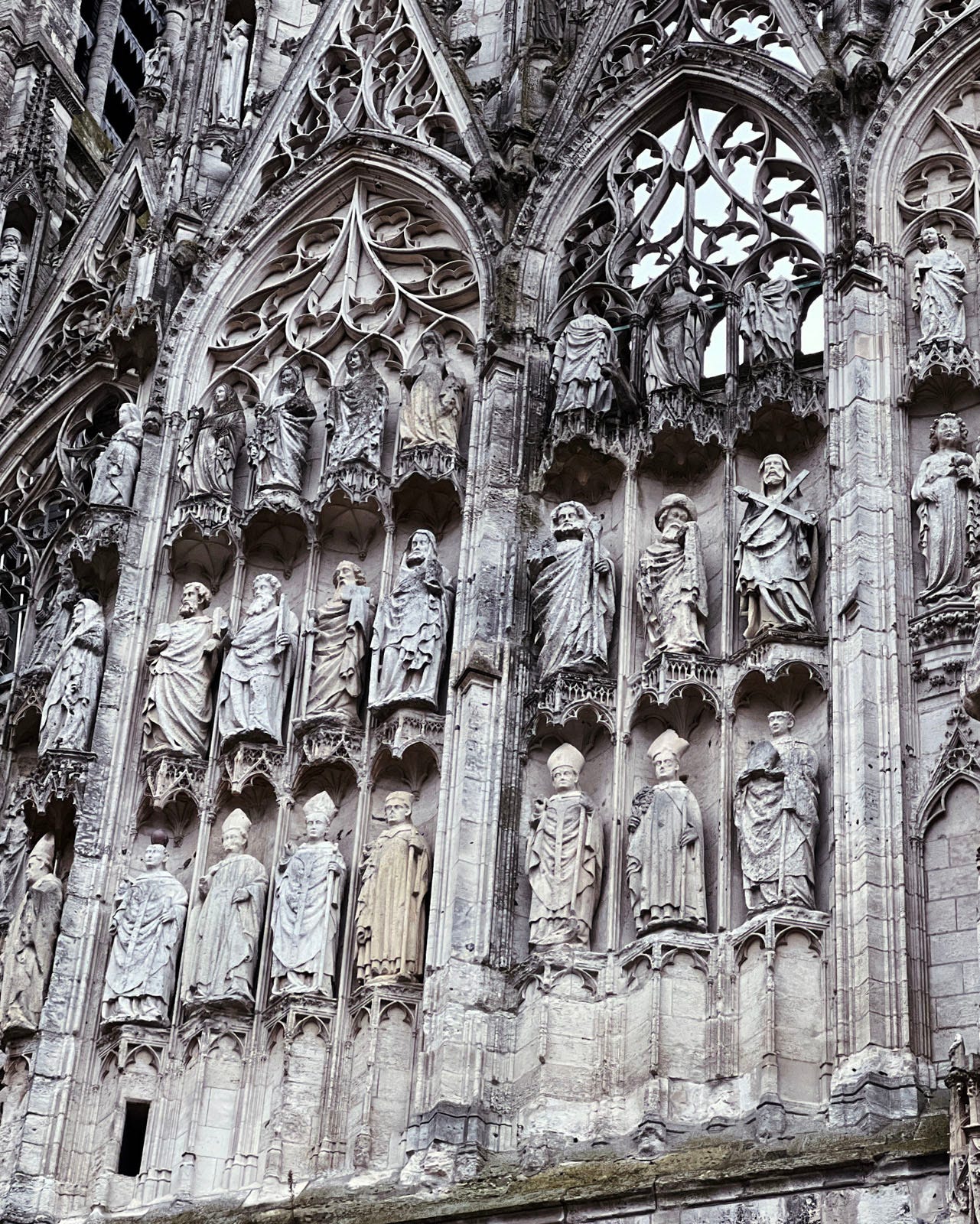
Some of the most interesting enhancements include the addition of a long axial Lady Chapel at the east end in the early 14th century (figures 29-30), as well as the reworking of the portals and facades on the west end (figures 1, 4 & 12-18) and the two transepts (figures 6-9 & 19-22) in a combination of Rayonnant and Flamboyant Gothic styles.
A central wood-and-lead spire was added in the early 16th century, replacing an earlier construction. After being destroyed by lightning in 1822, it was replaced by the current iron-and-copper spire, completed in 1882 (and currently undergoing repairs, as you can see from my photos).
Like many French cathedrals, Rouen weathered both the Wars of Religion and the French Revolution with significant damage, though it survived. The Huguenots ransacked the interior in 1562, destroying much glass and medieval statuary. Revolutionary iconoclasm caused further damage in the 1790s, though the building itself was spared demolition.
The 19th century saw restoration, as epitomized by the aforementioned tower. Allied bombing in WWII caused a lot of damage, especially to the northwest tower, south side aisle, and nave.
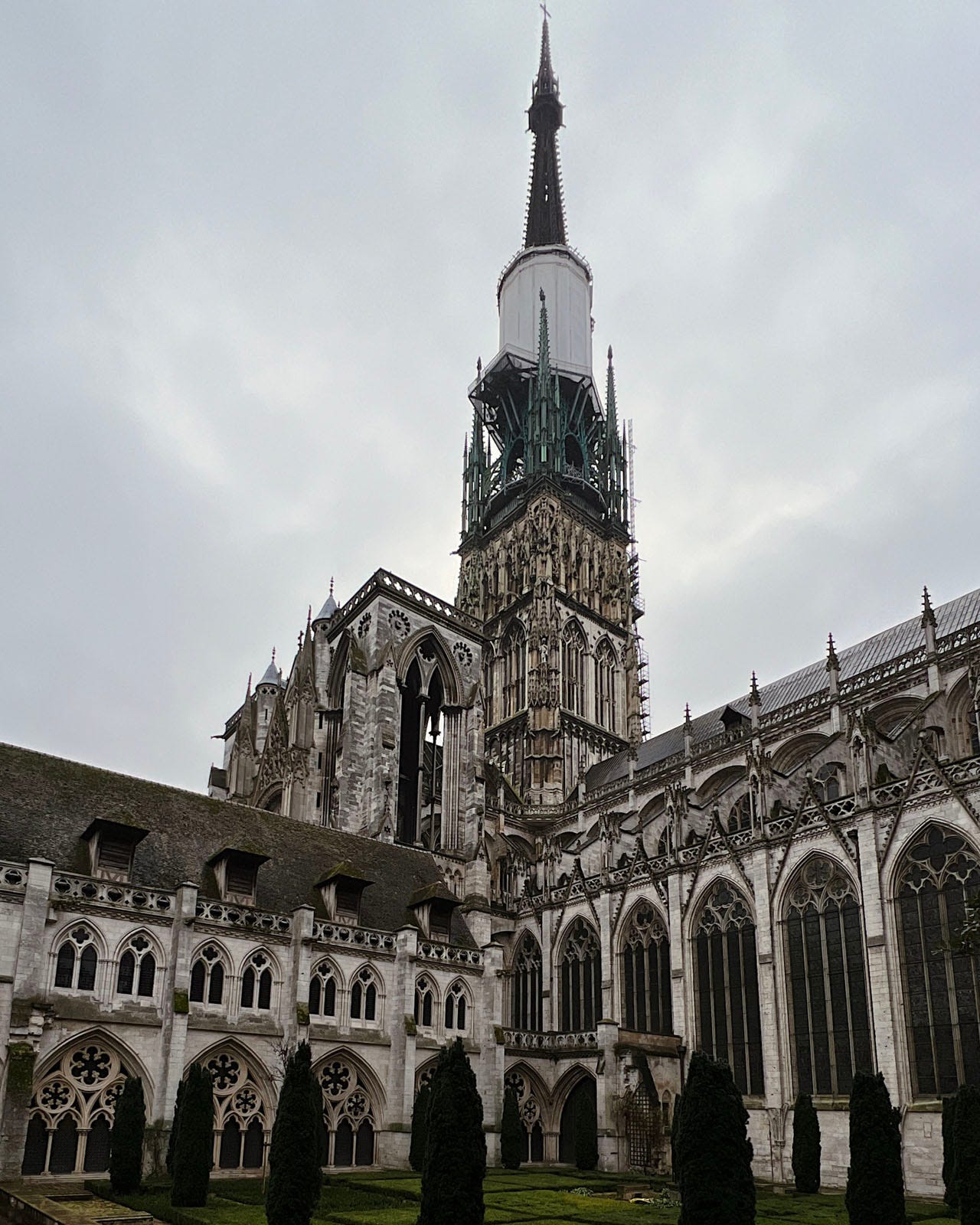
Today — or at least as of my visit two years ago — the cathedral is in a general state of disrepair and restoration. Of all the major cathedrals on my list, perhaps only Beauvais Cathedral presents more visible maintenance challenges when visiting. Most of my disappointment here was in the interior, and so this post’s photos focus more on the exterior. But the exterior has some great facades and portals, as you will see, and the interior can still be appreciated even if you have to look past the dust and scaffolding and nets preventing debris from falling on you.
Photo Tour
We will begin our virtual tour with the south transept (figures 6-9). The portal’s tympanum depicts the Passion and the Last Judgment — a common pairing meant to evoke both suffering and cosmic reckoning — while the surrounding archivolts are crowded with finely carved figures.
Though heavily restored, the overall design reflects the late 13th-century Rayonnant style — note the thin colonnettes, lace-like canopies, and quatrefoils packed with saints and grotesques. The transept’s upper levels were completed a bit later, and blend seamlessly with the decorative programs added to the west front, where we will head next.
From the south transept, we can walk clockwise around the cathedral, first examining it from the southwest (figures 6-10), and taking in its late Gothic tower and the west facade from the angle so famously painted by Monet — as you can see, the location is pretty much now inside a fine Vietnamese restaurant, so you have to wonder if Monet was sipping on pho while he worked (lol).
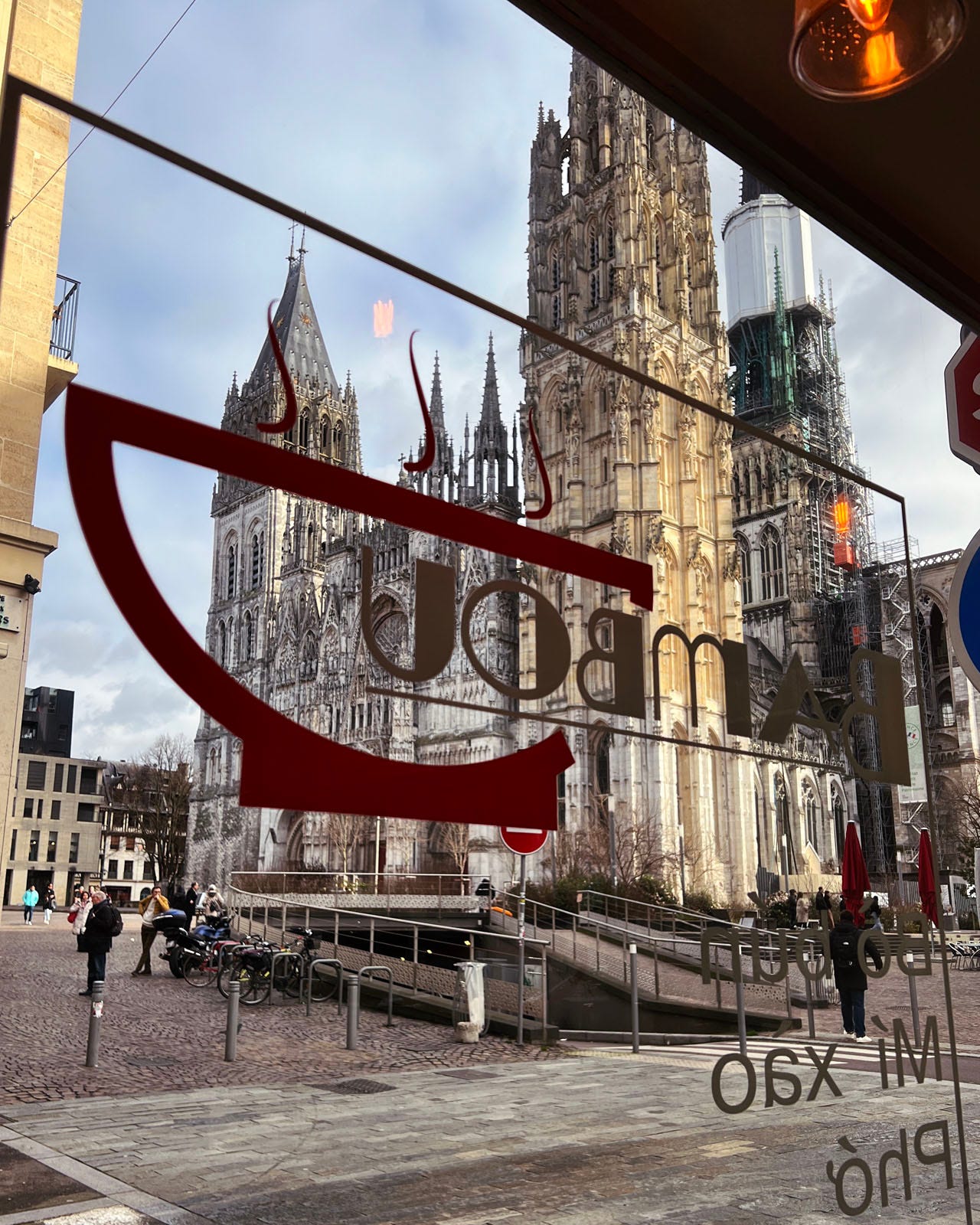
Continuing clockwise, we reach the cathedral’s most iconic feature: the west façade (figures 1, 4 & 12–18). This is a palimpsest of Gothic history — it is structurally 13th century but visually dominated by 15th- and early 16th-century Flamboyant ornamentation.
Beginning in the late 1300s, a series of campaigns gradually transformed the facade from a relatively plain number it into a riot of tracery, niches, pinnacles, and figural sculpture. The facade was also buttressed at this time with massive flanking supports, each disguised behind elaborate statue galleries.
The rose window above the central portal is framed by an intricate pediment filled with openwork stone carving, while below, the portal’s archivolts and jambs are packed with figures from the genealogy of Christ. Its tympanum depicts Jesse dreaming the Tree of Jesse — a vision of the Christ’s royal lineage that was a favorite subject in Gothic art, though this is the only location I know of where it has such a prized central location.
Both the right and left portals are similar in design, but we’ll focus on the north (left) portal because its sculpture is better preserved. The tympanum shows scenes from the martyrdom of John the Baptist.
The archivolts here are particularly striking: instead of the usual radial bands of saints or prophets, they incorporate perforated geometric arches — almost like stone lace — interlaced with finely carved foliage and delicate figurines between the moldings. It’s one of the most inventive archivolt treatments of its period, and its airy intricacy sets a tone for the entire façade.
Approaching the north transept through what was once called the Portail des Libraires (“Booksellers’ Alley”), we find another sculpturally rich entrance — though these have seen better days (figures 19–22). The central trumeau features a clearly reconstructed Saint Romain, the 7th-century bishop of Rouen, shown triumphing over the Gargouille — a dragon-like beast he famously subdued, earning the city’s gratitude and the cathedral chapter the right to pardon a prisoner each year.
Rouen’s nave (figure 23) is wide, relatively low, and heavily layered — a classic example of early Gothic massing, with thick piers articulated as masses of think columns. The tall side chapels along the north aisle (figure 24) stretch well above the arcade level, giving the interior a striking vertical tension even when the main vaults are modest by French standards. Tucked into one corner of the north transept (figure 26) is the beautiful spiral staircase to the old cathedral library — a Flamboyant showpiece known as the “Escalier des Libraires.”
Walking behind the choir (which was closed and under repairs when I visited), the ambulatory (figures 27-28) opens into a surprisingly expansive space, with tall windows and three radiating chapels. The oldest glass in the cathedral can be found here, including a remarkable early 13th-century window depicting the life of St. Julian the Hospitaller.
At the very eastern tip of the cathedral, the axial Lady Chapel (figures 29-30) stretches out like an architectural coda — a long, luminous space added in the early 1300s and later filled with art and memorials. It is topped on the outside with gilded statue of the Virgin Mary, dating to 1541, and which marks both a devotional focal point and a stylistic transition — Gothic in setting, Renaissance in expression, Marian in spirit.
** Please hit the ❤️ “like” button❤️ if you enjoyed this post; it helps others find it! **
In Detail
Here’s a Substack Note showing six paintings from Monet’s “Rouen Cathedral” series:
Visiting Advice & Conclusion
My Visit Dates: 2-3 February 2023
Rouen is a charming town worth at least a long day trip, if not a couple nights and a full day — especially for anyone with an interest in Gothic architecture.
In addition to the cathedral, there are two other major works within easy walking distance: the Church of St Maclou, a compact Flamboyant jewel, and the Abbey Church of St-Ouen, a vast and luminous space that rivals Rouen Cathedral in scale — and surpasses it in internal coherence.
Rouen Cathedral itself may be weathered and mid-restoration, but its facades still bristle with centuries of artistry and ambition — and even if the interior is partially blocked off, the building’s complexity rewards close attention and multiple circuits.


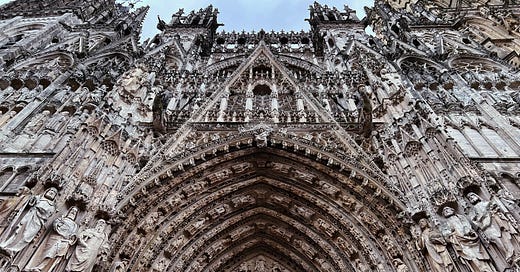




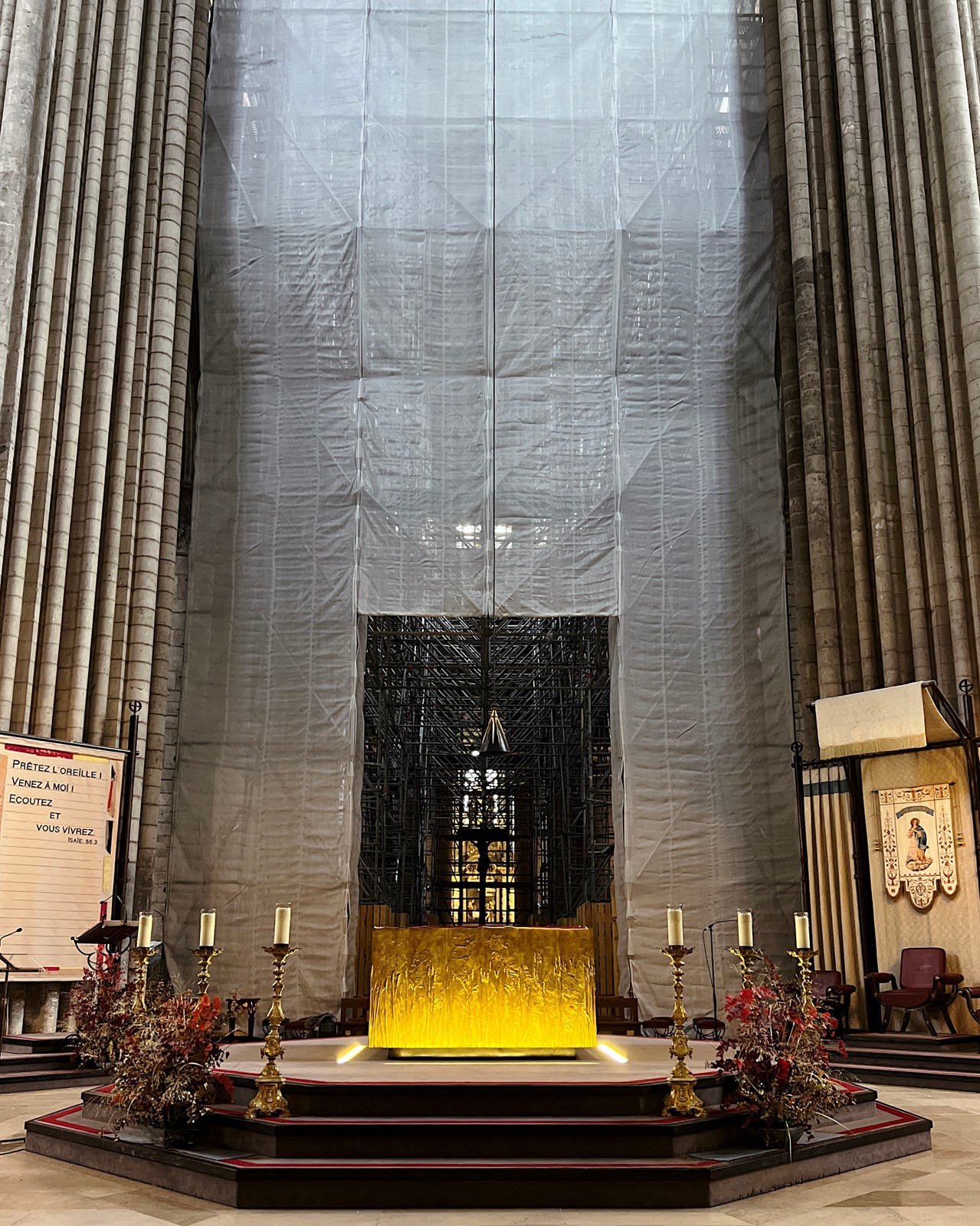
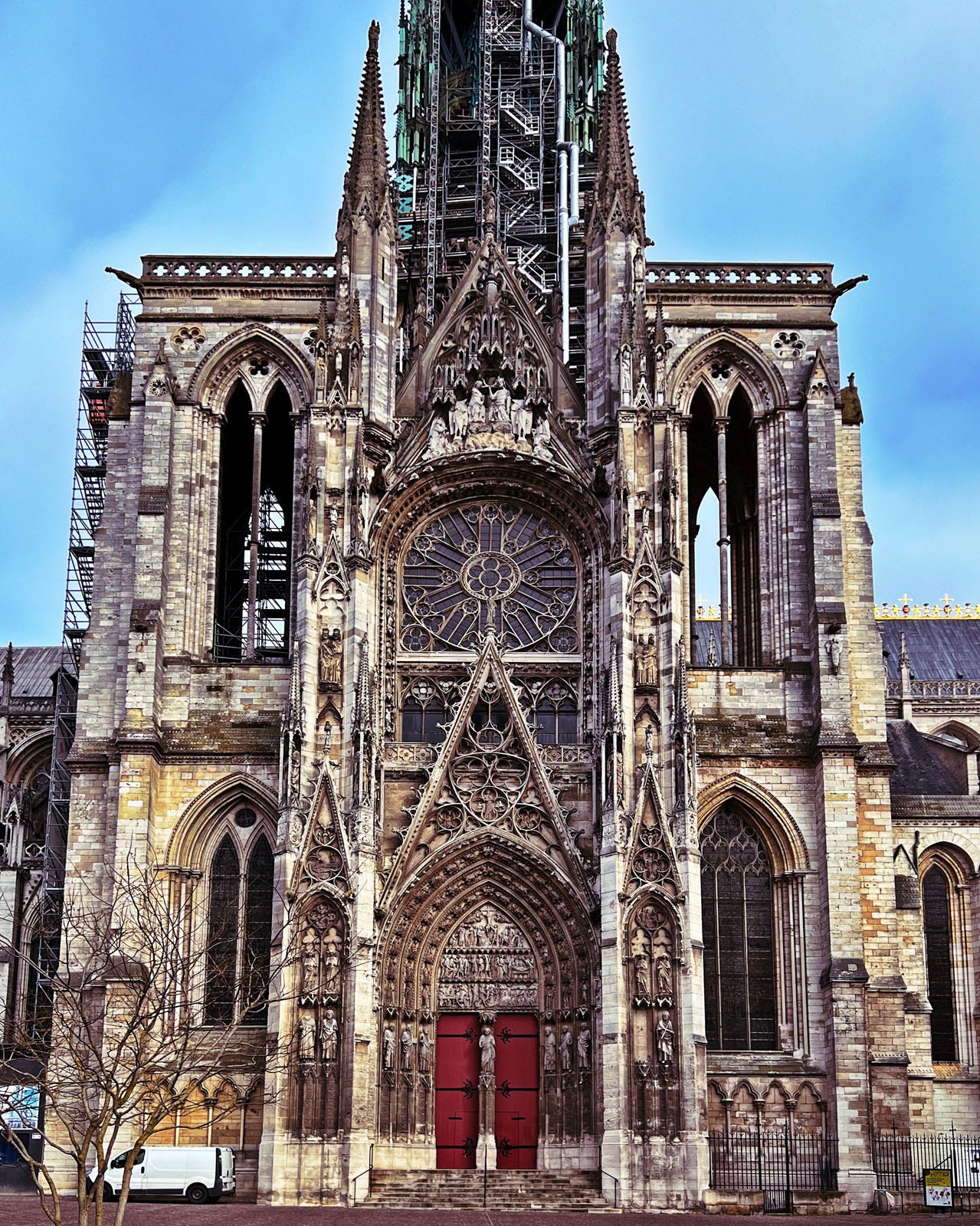
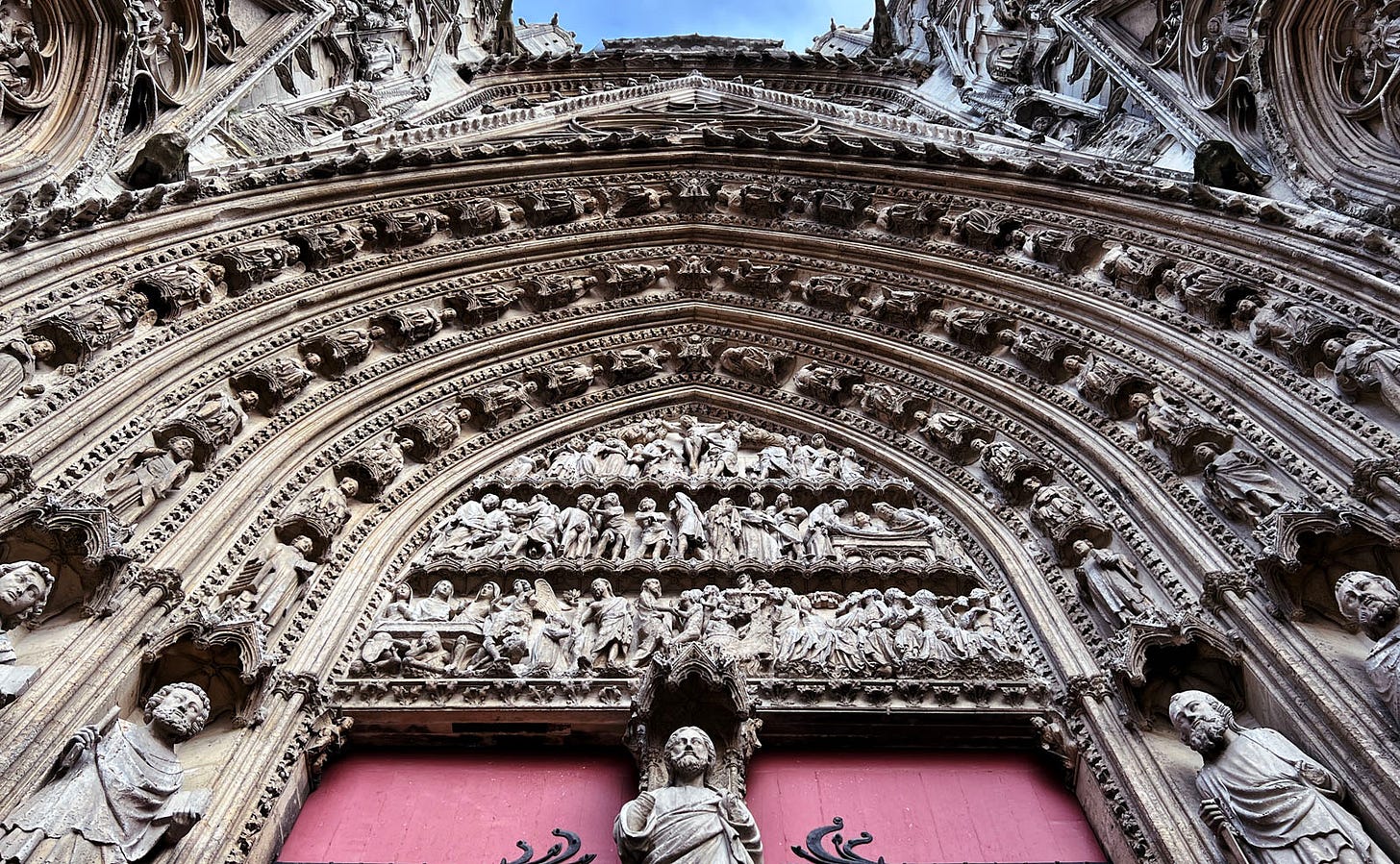

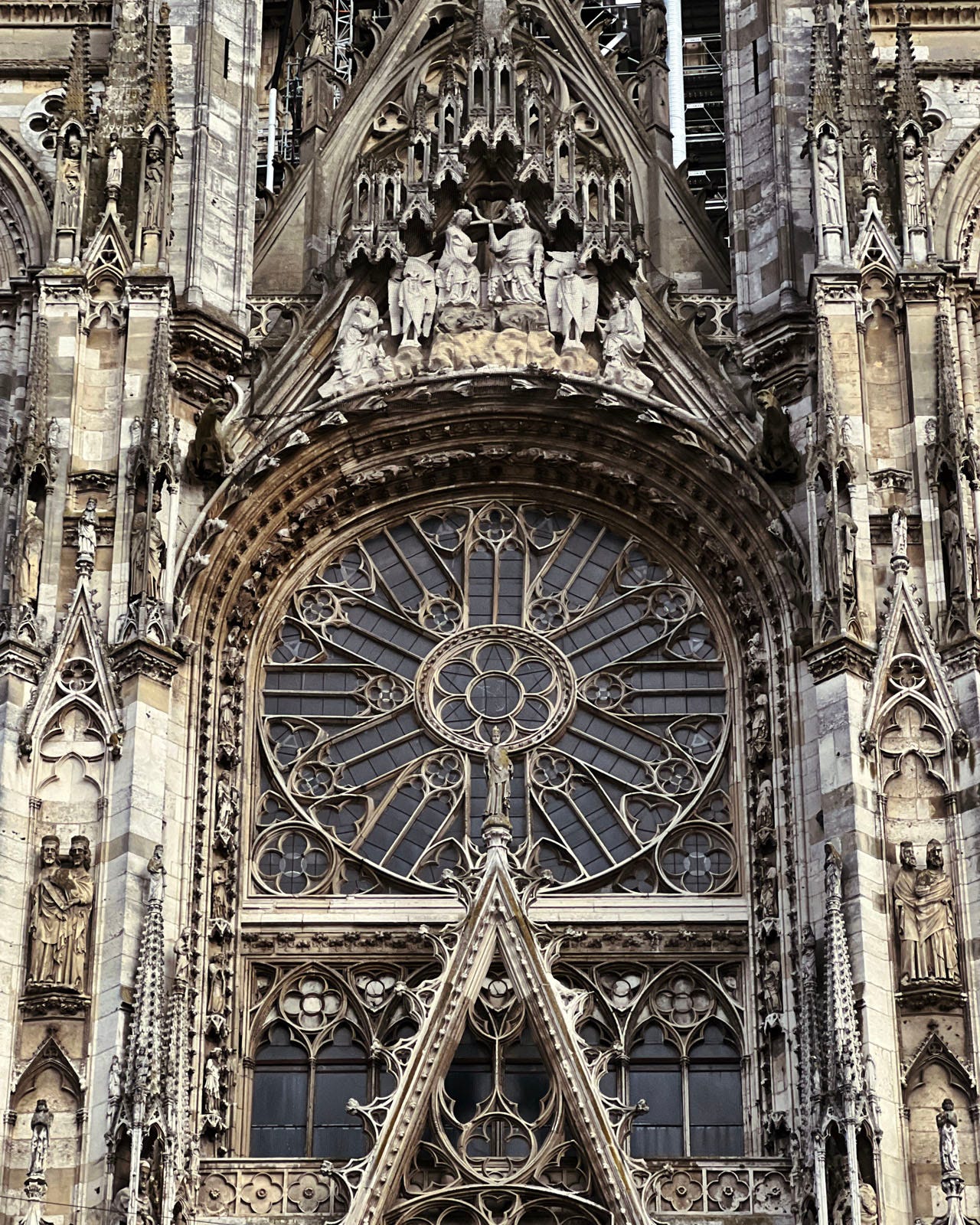
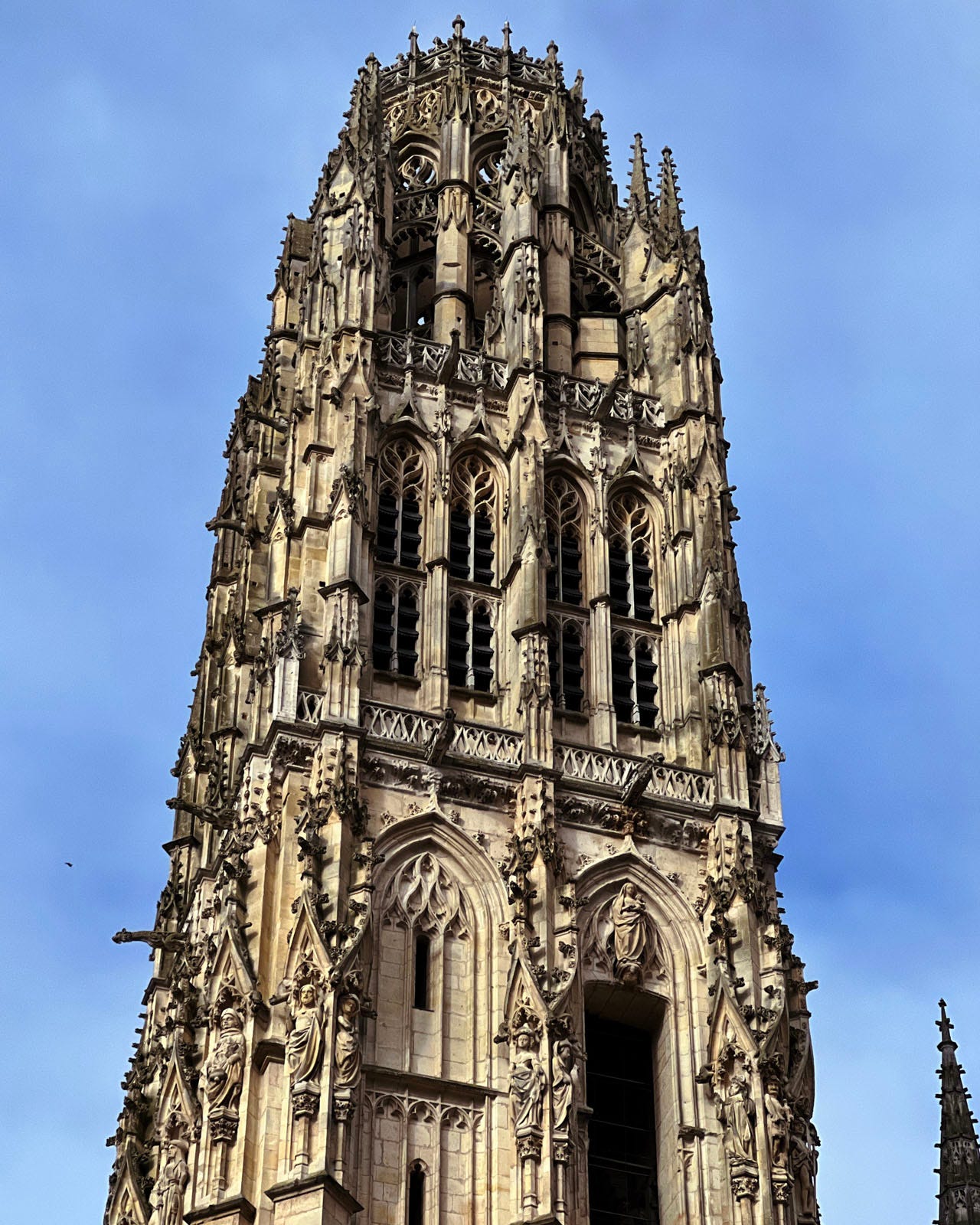
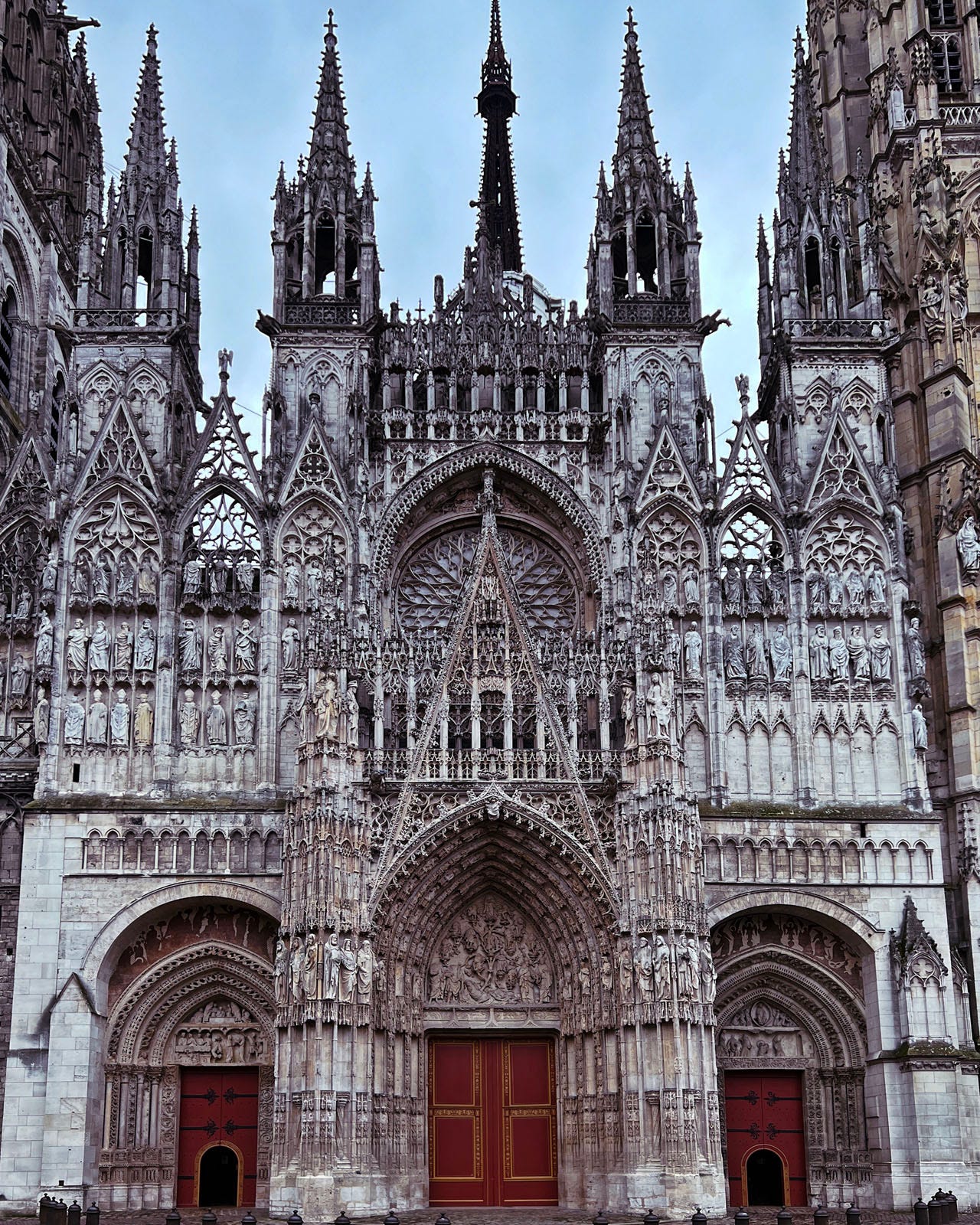
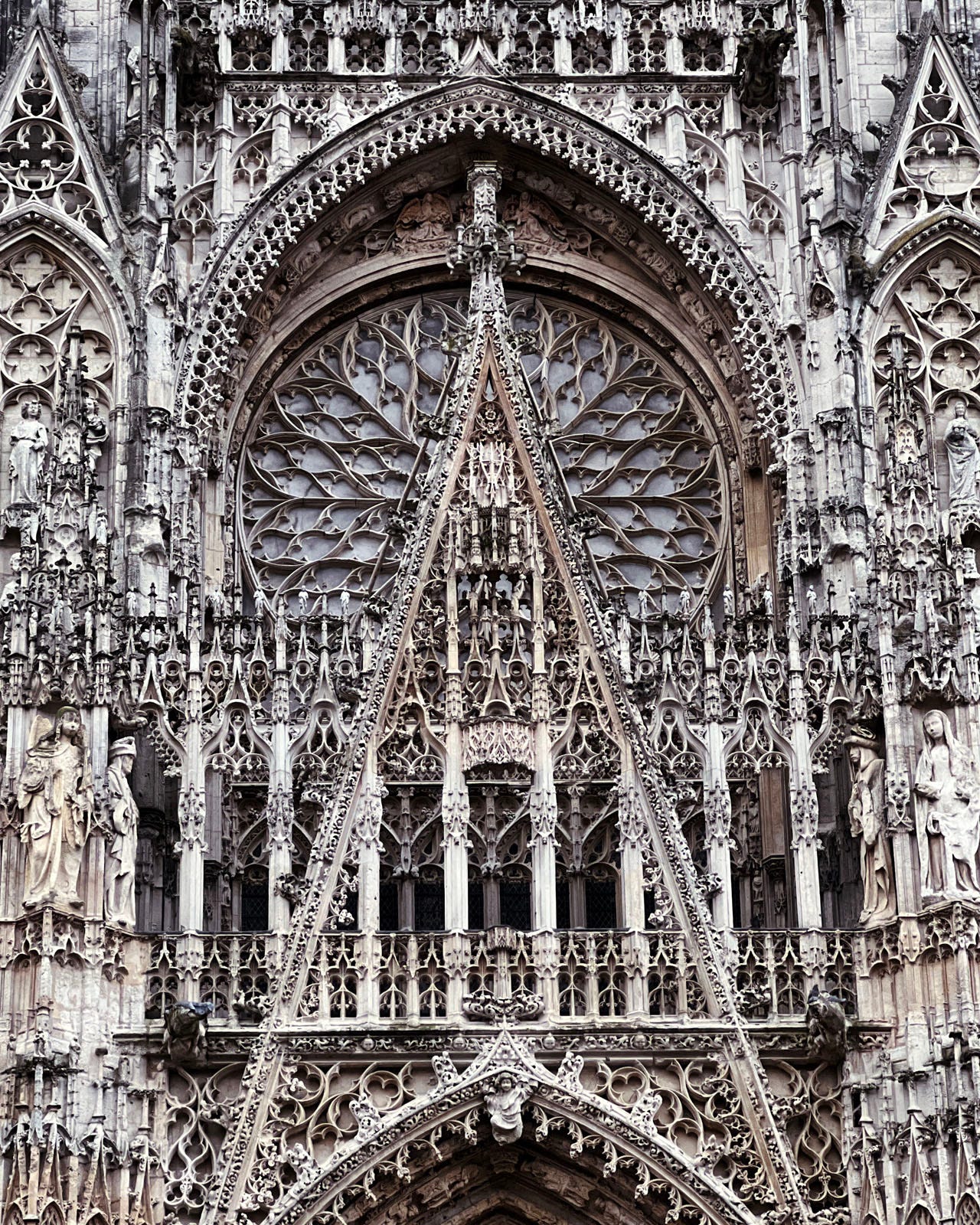
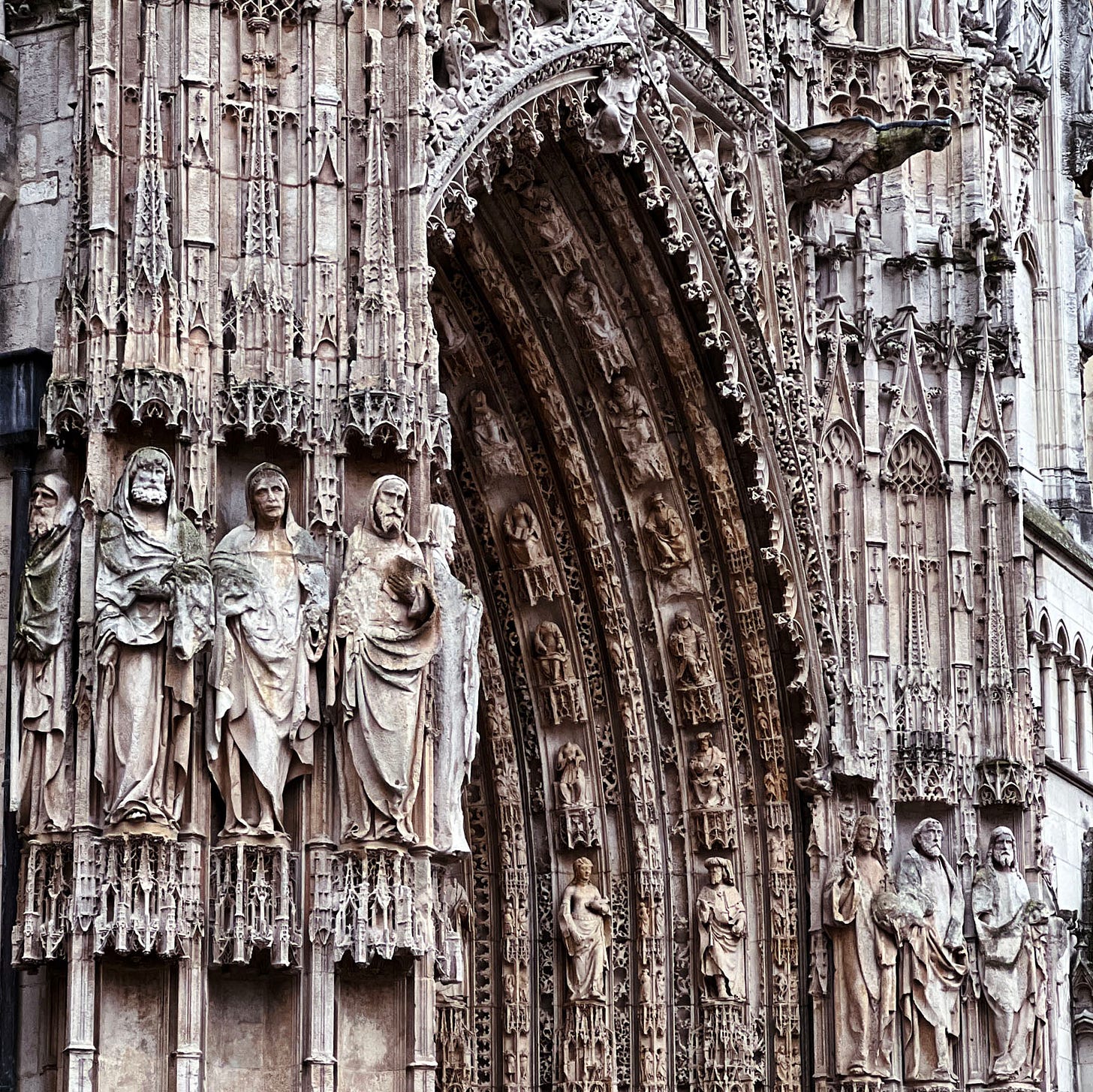
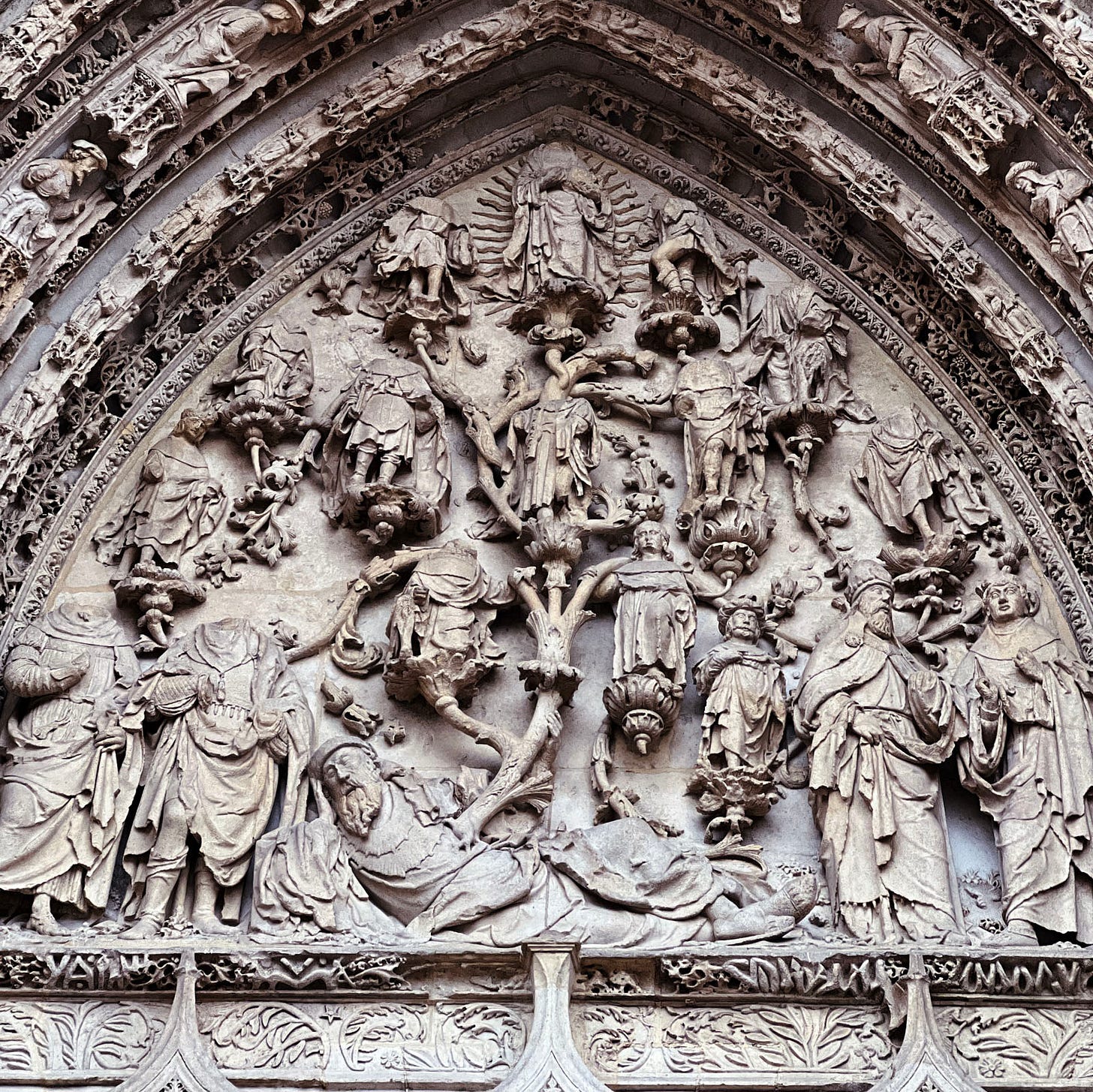
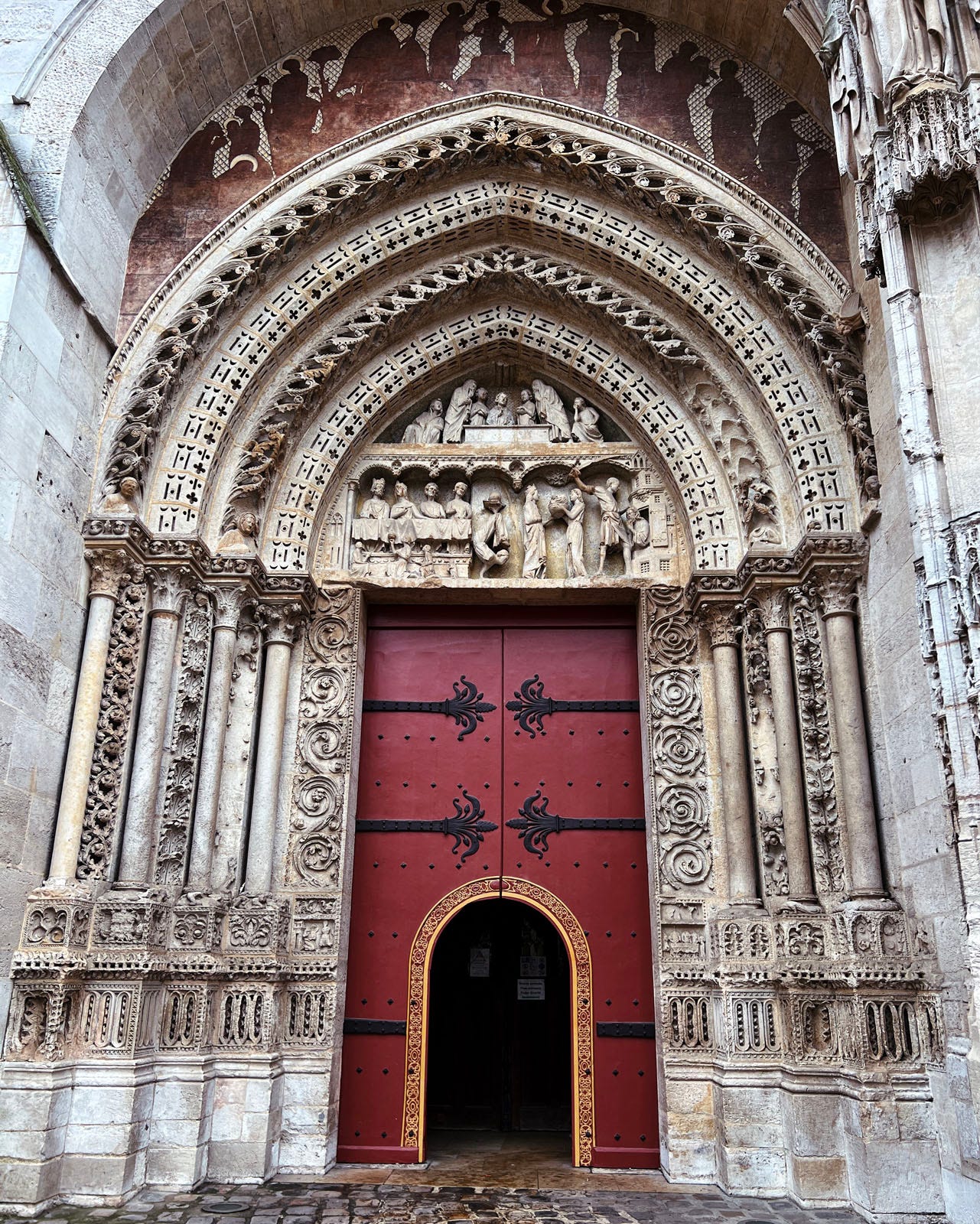

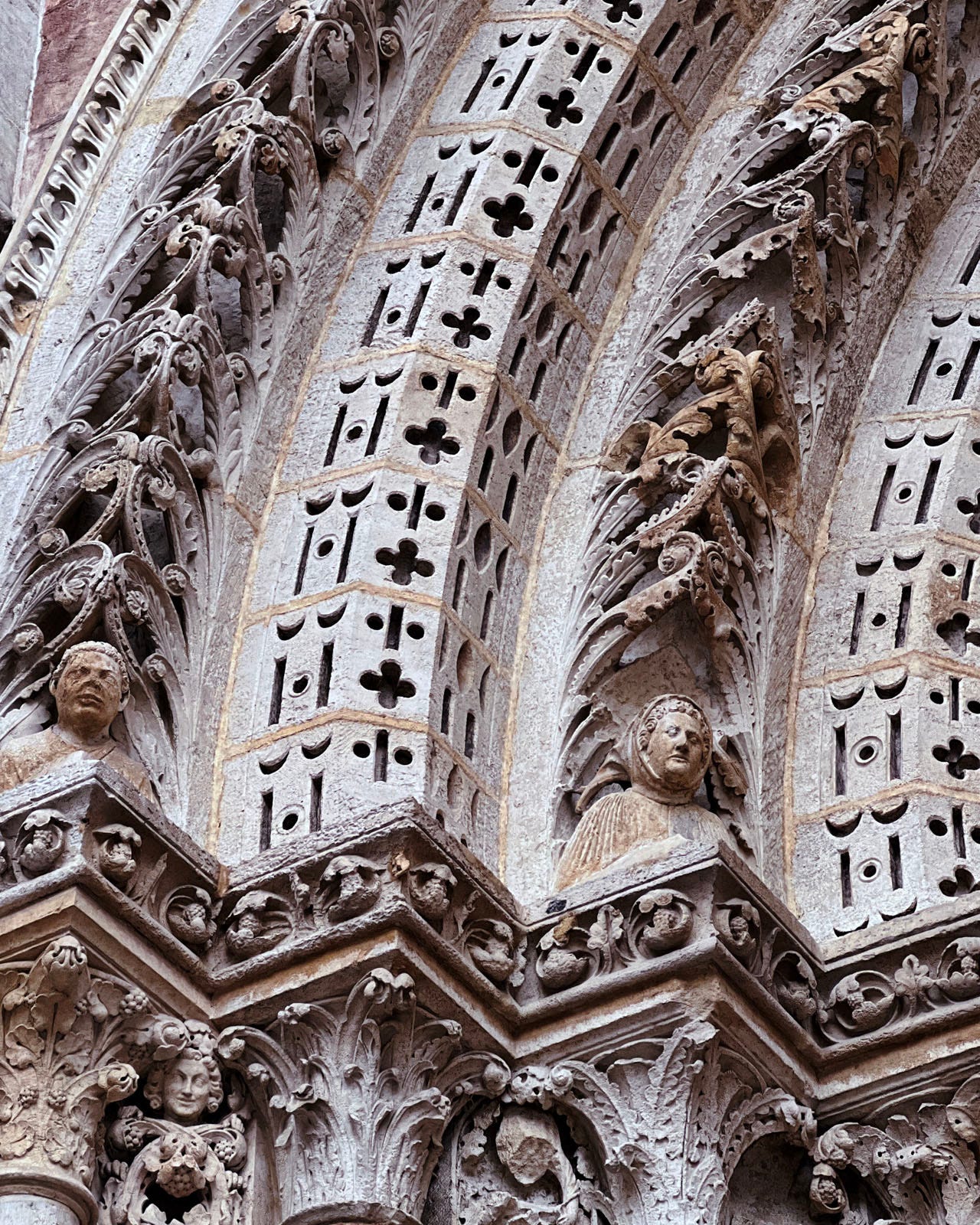
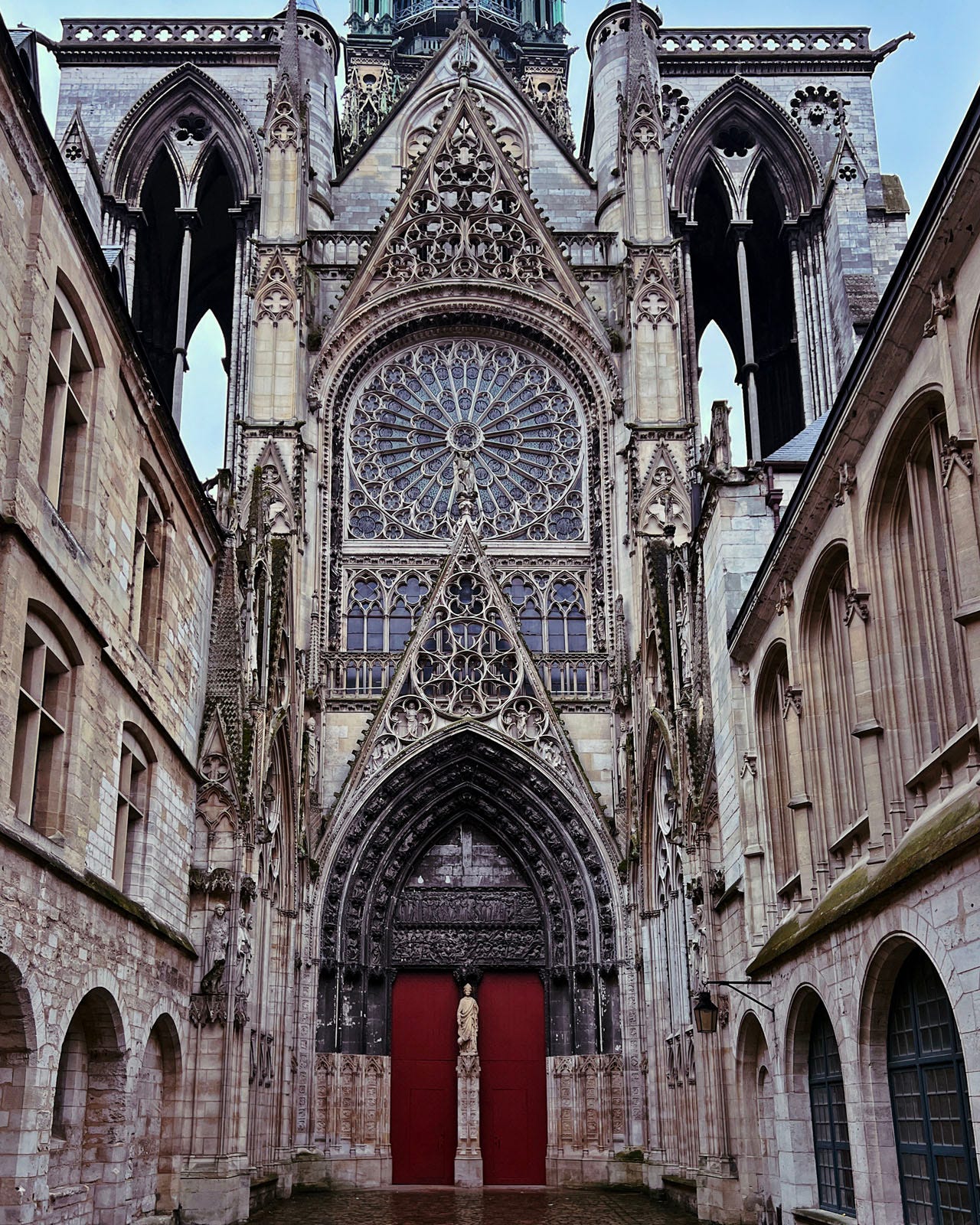
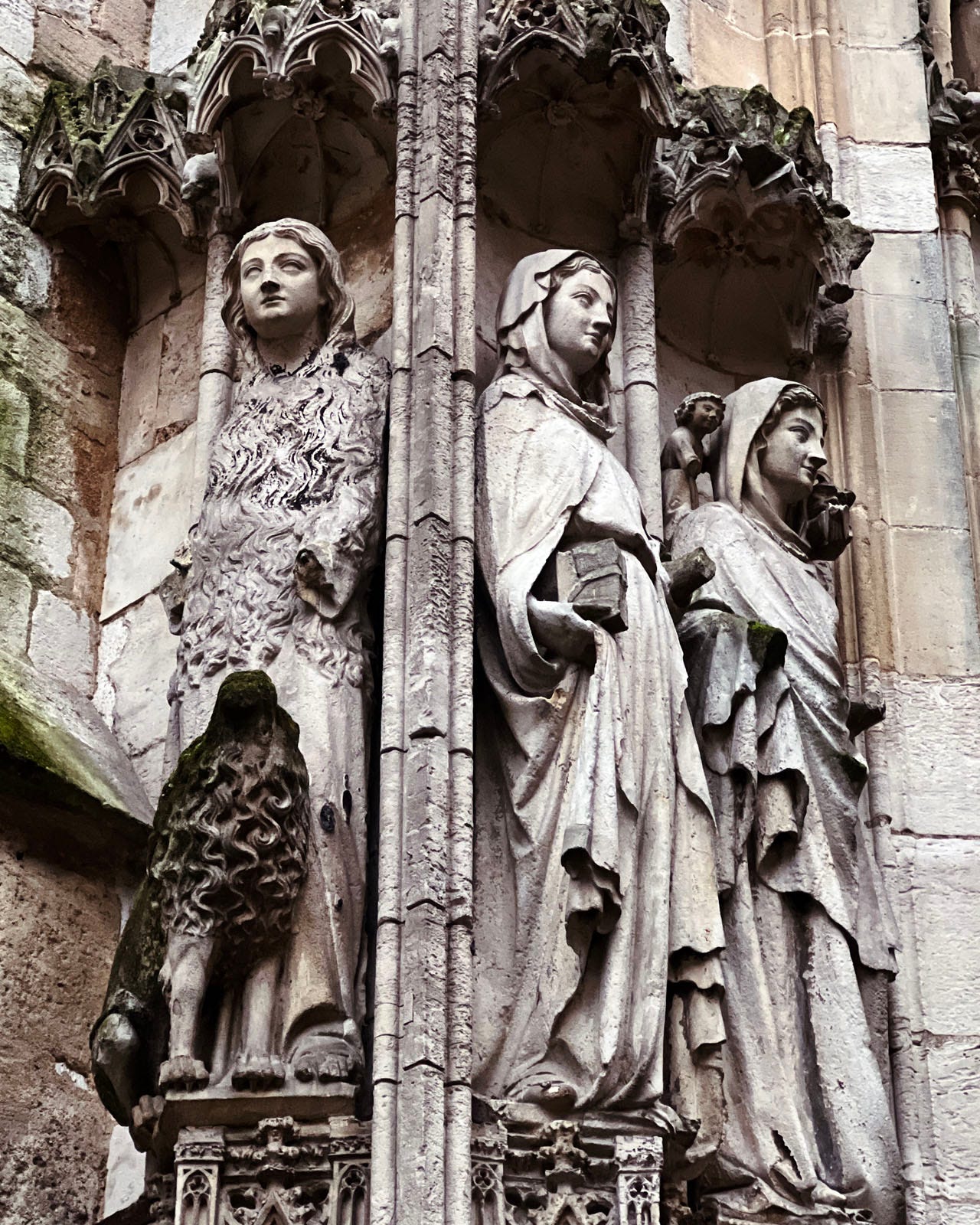

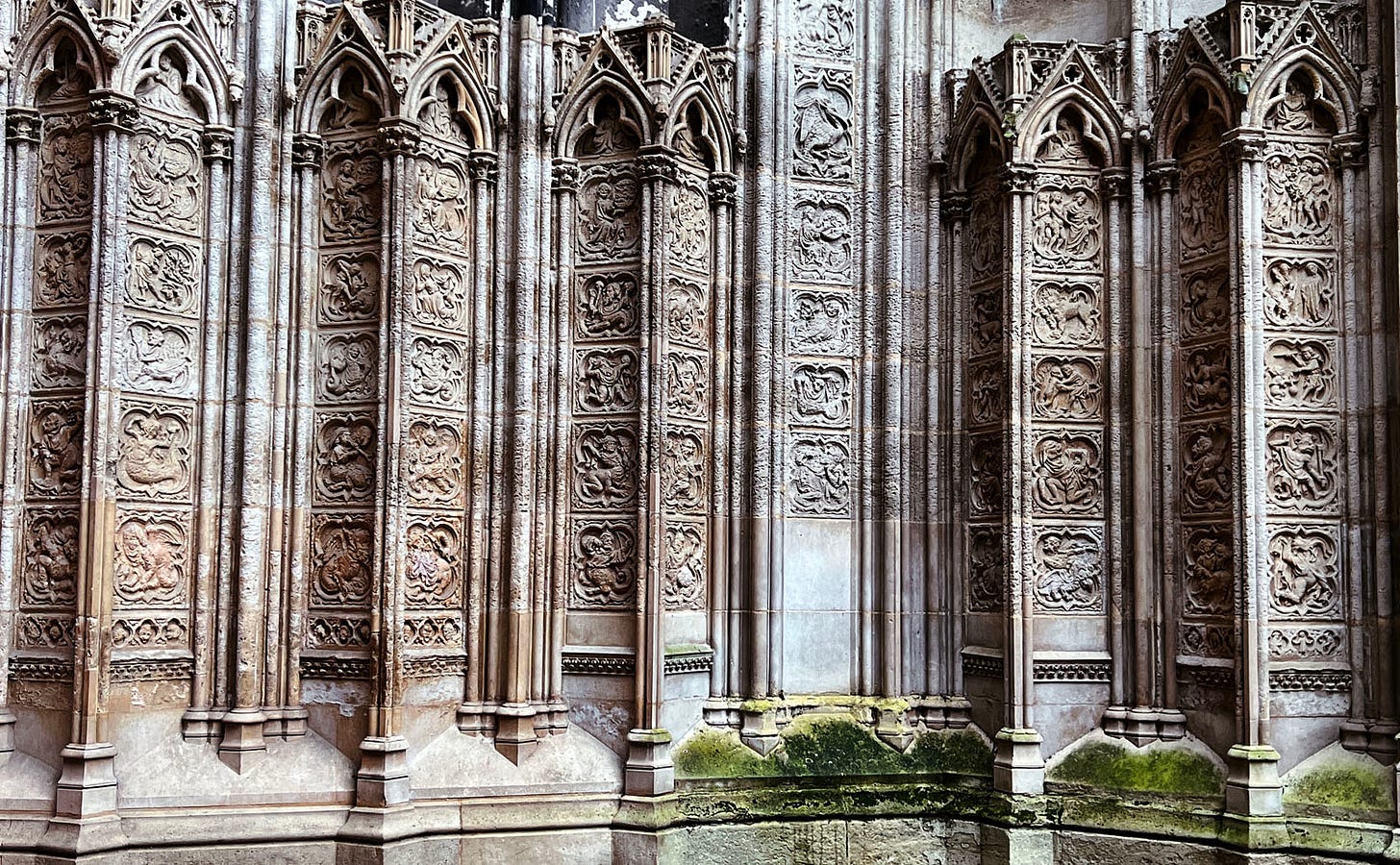
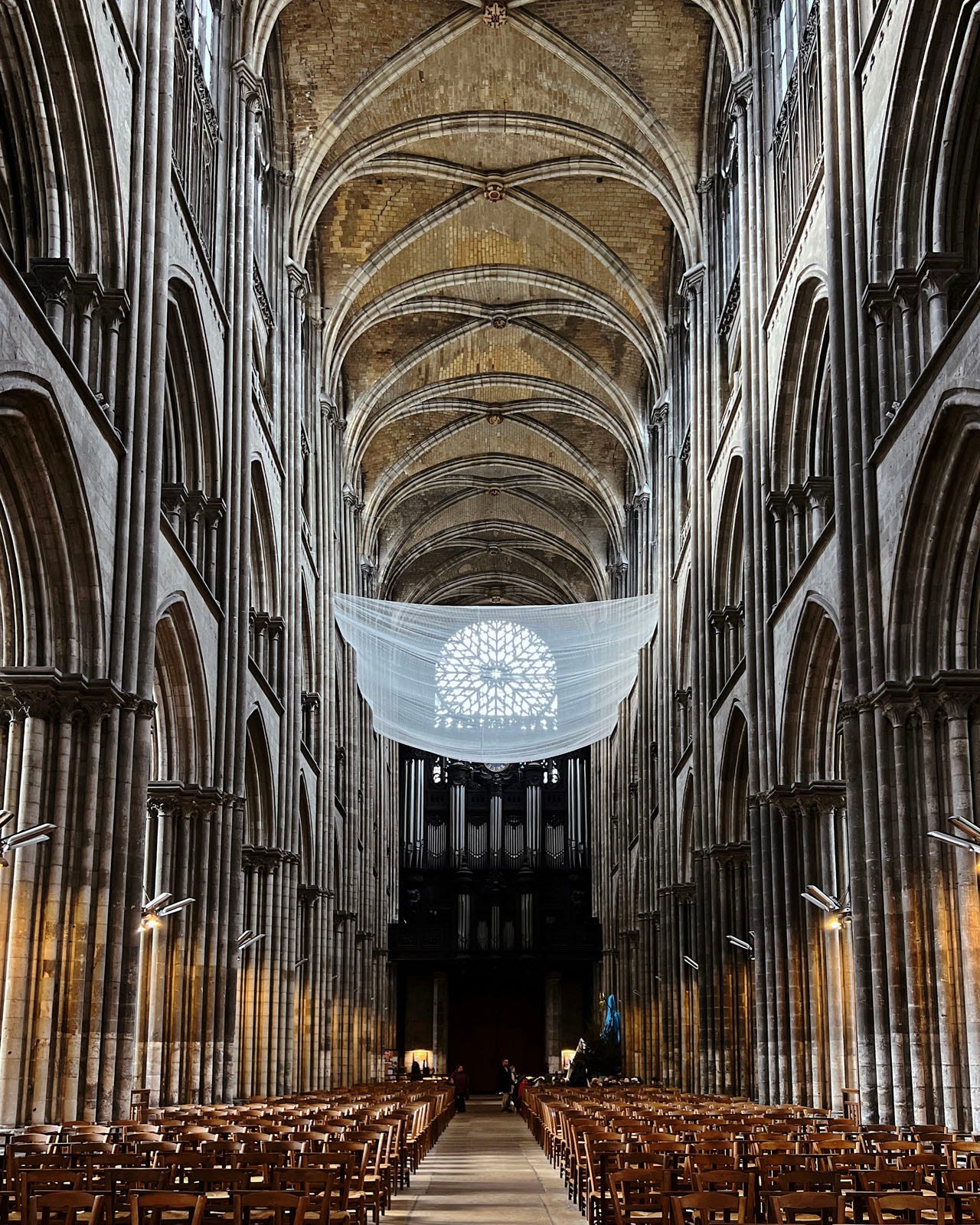
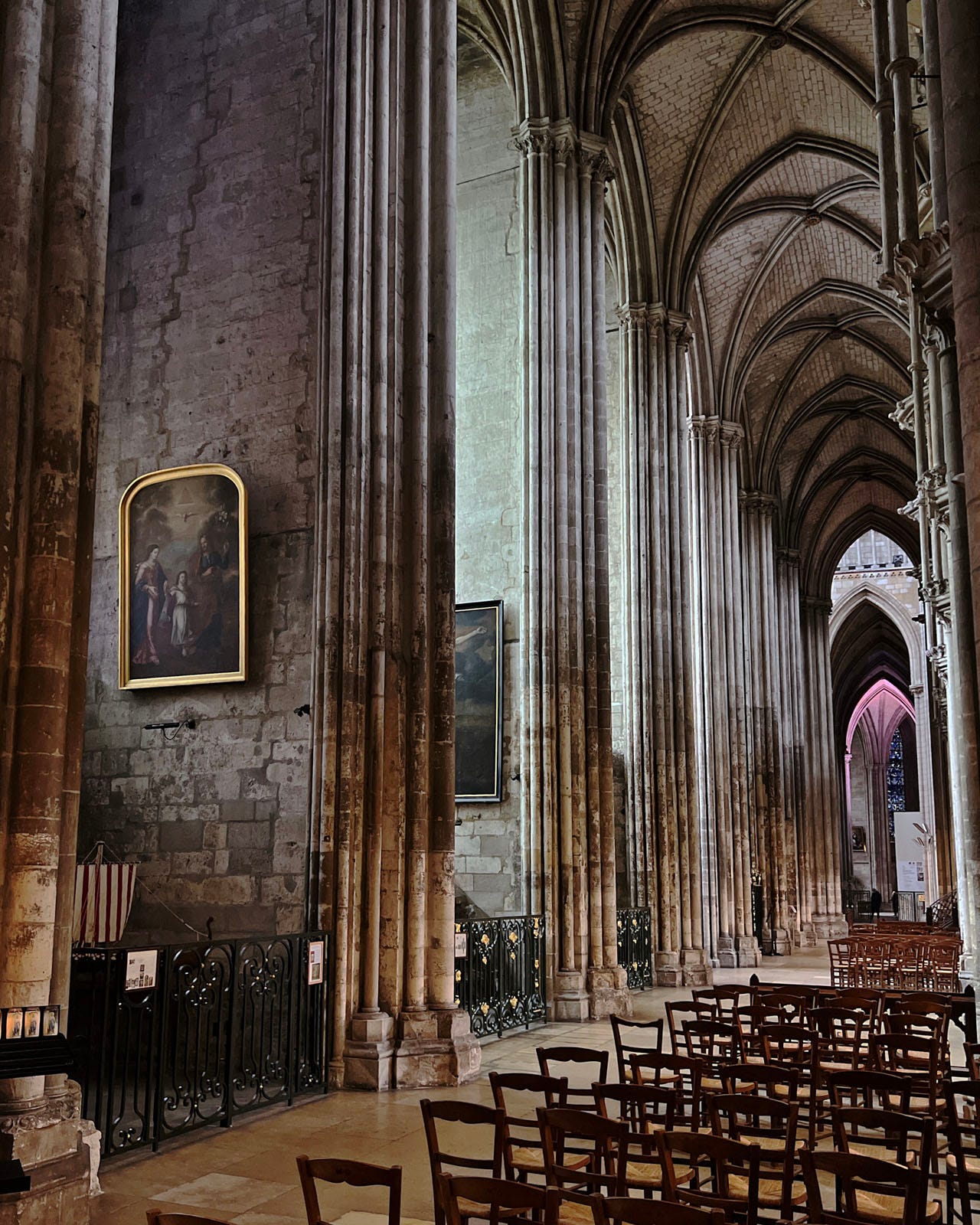
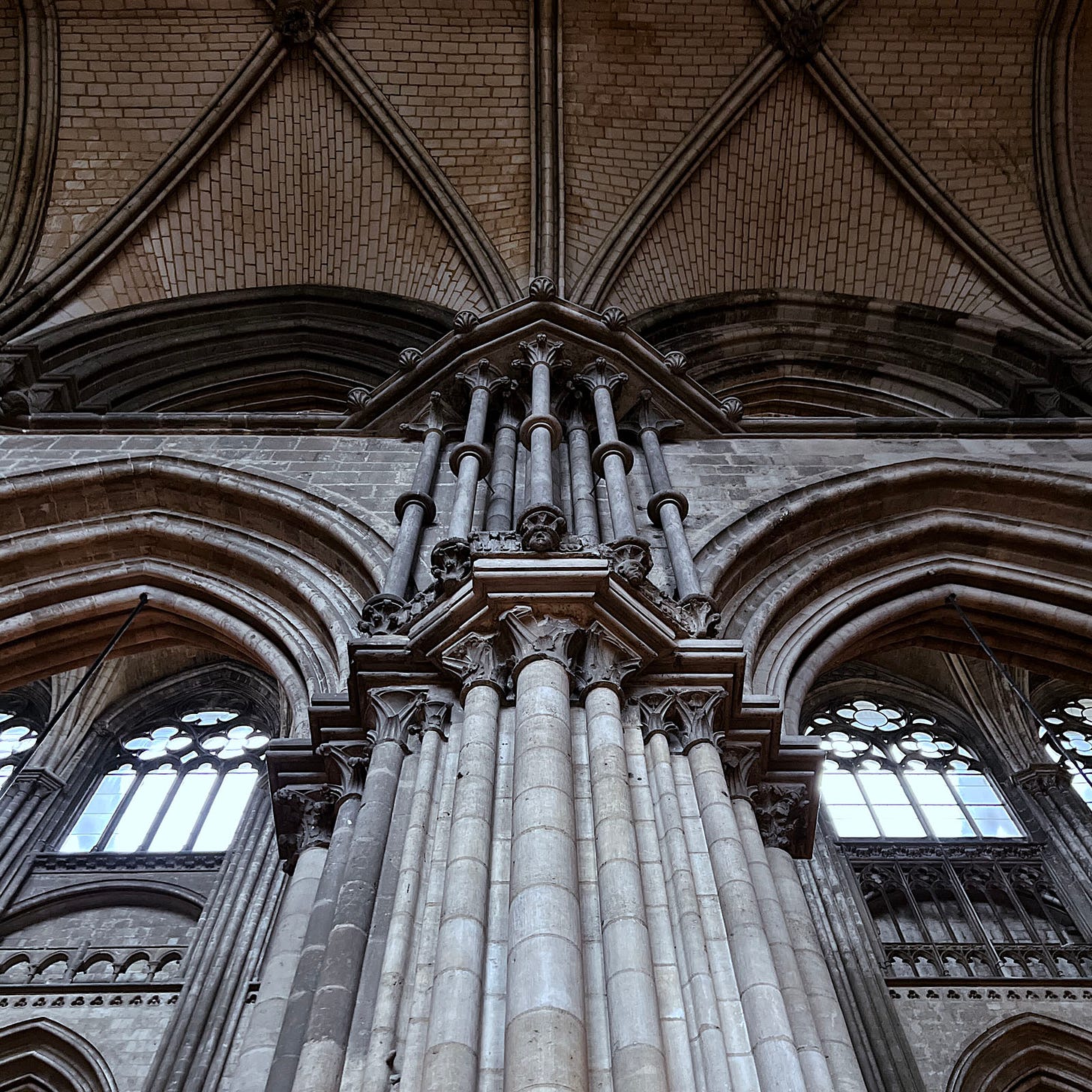
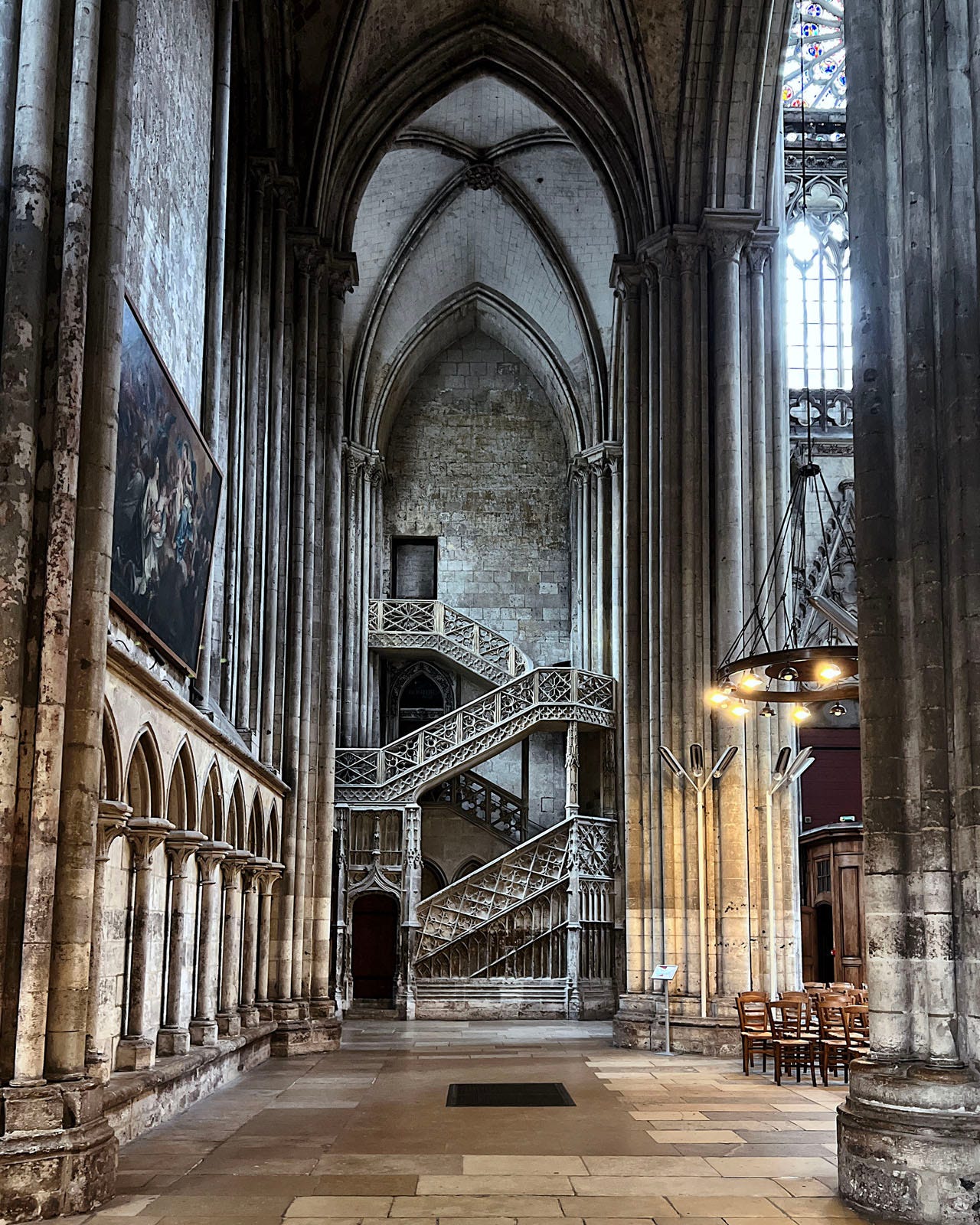
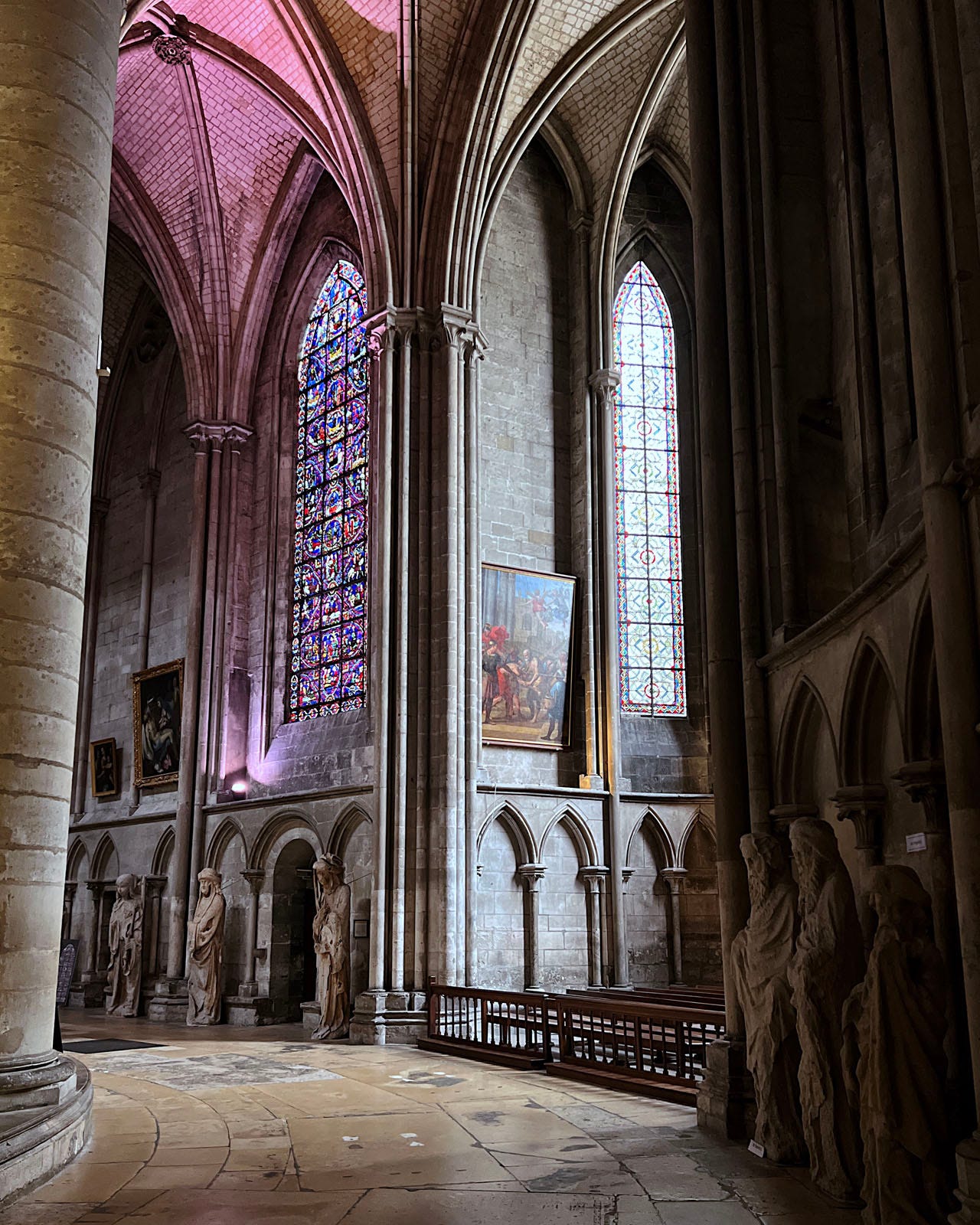
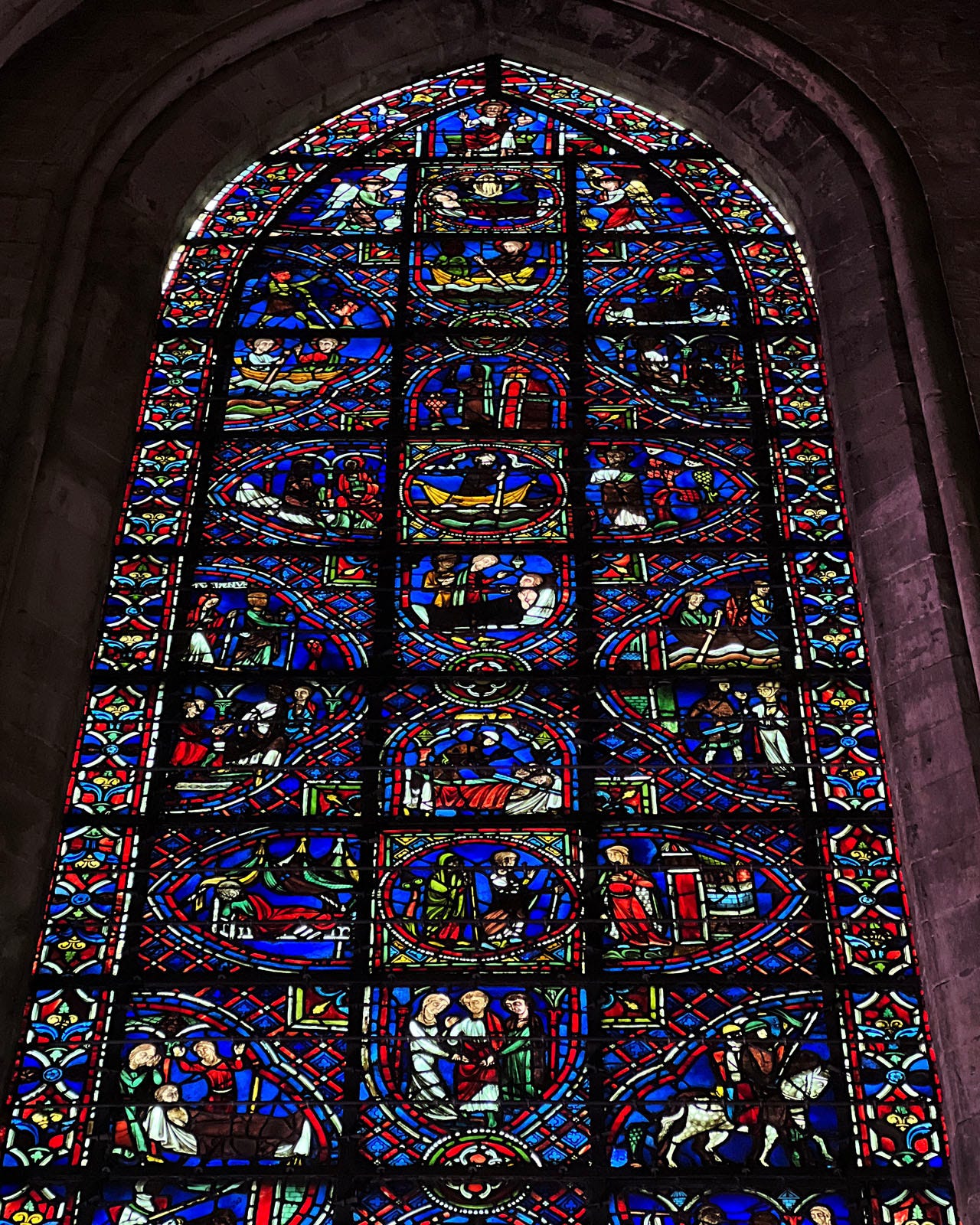
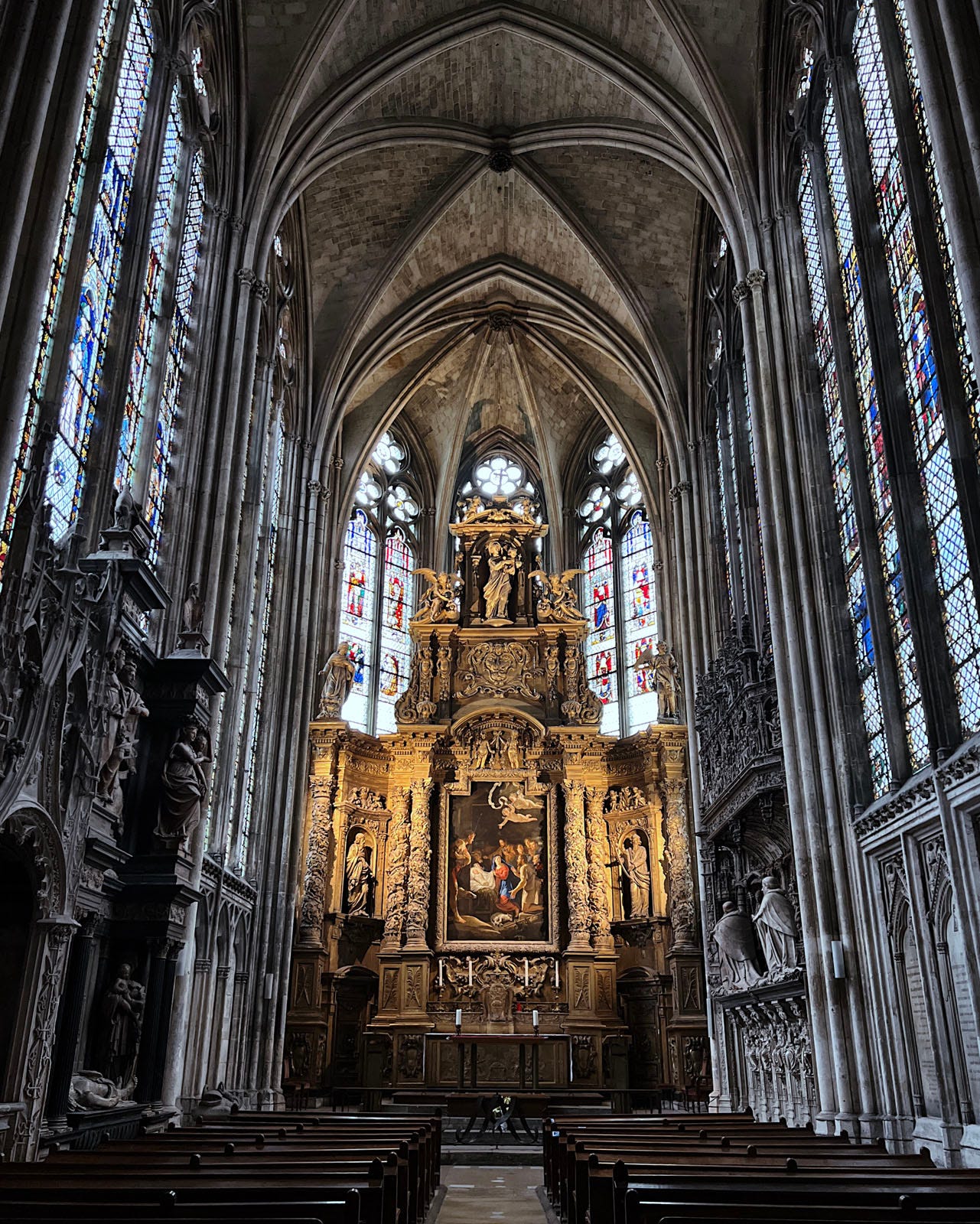
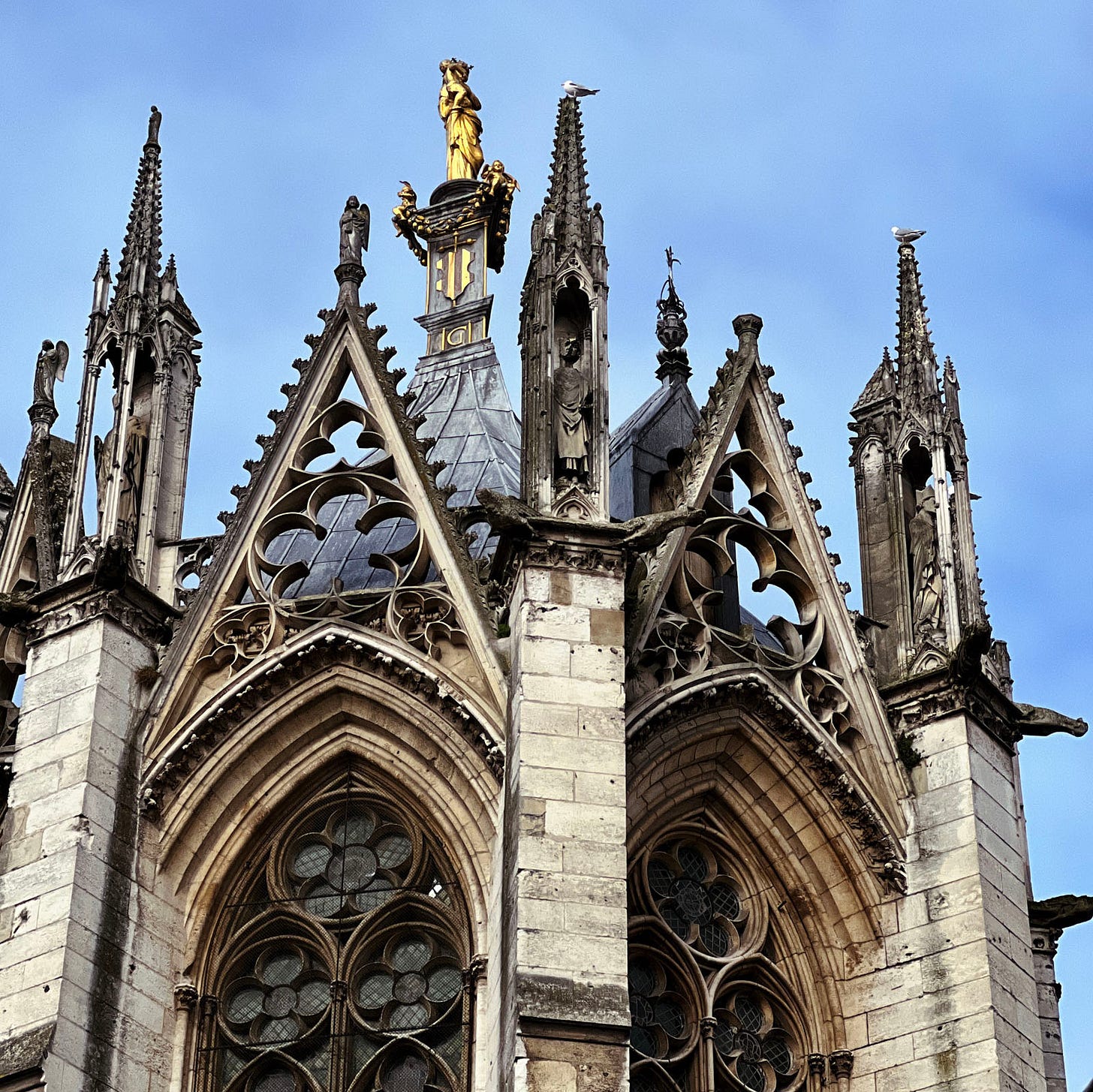
Sorry, Ben, you are seeing it at its worst, and not at a good time of the year. I've visited several times (before the interior scaffolding) and found it to be quite enjoyable, though it has a certain dullness about it (not sure if that's the right word). The false tribune (gallery) above the nave arcade is an interesting throwback to an earlier period, giving it a 4-storey elevation--probably the last major Gothic building to do that. The interior, as I mentioned, is not my favorite, but the exterior is extraordinary--difficult to photograph because it is so vast, so photos that try to get it all in look warped and unnatural. I do it in sections. Congratulations on your good work!
Beautiful. Where is this located?